COMMON FOOT & ANKLE CONDITIONS

ATHLETE’S FOOT
Athlete’s foot is a skin disease caused by a fungus, usually occurring between the toes. The fungus most commonly attacks the feet because shoes create a warm, dark, and humid environment which encourages fungus growth. The signs of athlete’s foot are drying skin, itching scaling, inflammation, and blisters.

BONE SPURS
A bone spur is an overgrowth of bone as a result of trauma or reactive stress of a ligament or tendon. This growth can cause pain and even restrict motion of a joint, depending on its location and size. Spurs may also be located under the toenail plate, causing nail deformity and pain.
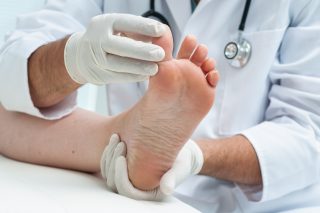
BUNIONS
A bunion is an enlargement of the joint at the base of the big toe—the metatarsophalangeal (MTP) joint—that forms when the bone or tissue at the big toe joint moves out of place. This forces the toe to bend toward the others, causing an often painful lump of bone on the foot.
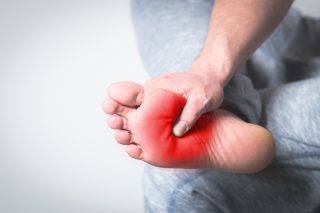
BURSITIS
This is an inflammation of the bursa, a sac of tissue that protects bony prominences. It is typically treated with conservative measures.

CALLUSES
A callus is a build-up of dead skin cells, usually on the sole of the foot. They are typically painful and are caused by pressure on bony prominences. They may be pared down for temporary relief. Other measures are available for long-term treatment.

CORNS
A corn is a thickening of the skin on bony prominences, always on the toe. They can be treated or removed with surgery, if necessary.
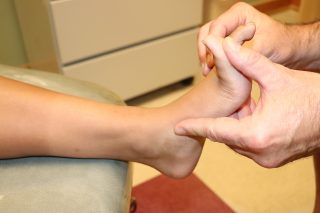
FUNGAL NAILS
Fungal nails are an infection of the bed and plate underlying the surface of the nail, causing the nail to become thicker, yellowish-brown or darker in color, and foul smelling. The infection is capable of spreading to other toenails, the skin, or even the fingernails. Those who suffer chronic diseases, such as diabetes, circulatory problems, or immune-deficiency conditions, are especially prone to fungal nails.
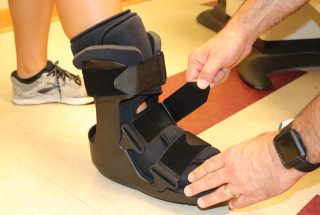
GOUT
Gout is an extremely painful condition caused by a build-up of uric acid, typically affecting the big toe joint. But it can also affect other joints in the body. It is usually treated with steroids.
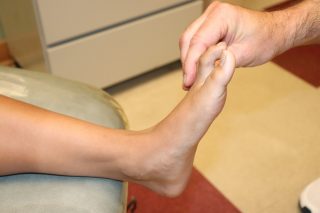
HAMMERTOES
A hammertoe deformity is a contracture of the toe(s), frequently caused by an imbalance in the tendon or joints of the toes. Due to the “buckling” effect of the toe(s), hammertoes may become painful secondary to footwear irritation and pressure. Corn and callus formation may occur as a hammertoe becomes more rigid over time, making it difficult to wear shoes. This deformity may be corrected through a surgical procedure to realign the toe(s).
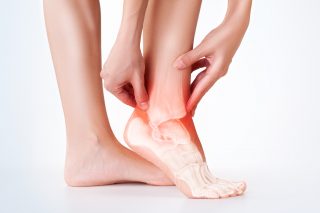
HEEL PAIN
Heel pain is generally the result of faulty biomechanics (walking gait abnormalities) that place too much stress on the heel bone and the soft tissues that attach to it. The stress may also result from injury, or a bruise incurred while walking, running, or jumping on hard surfaces; wearing poorly constructed footwear; or being overweight. Heel pain, sometimes disabling, can occur in the front, back, or bottom of the heels.

INGROWN TOENAILS
Ingrown nails, the most common nail impairment, are nails whose corners or sides dig painfully into the soft tissue of nail grooves, often leading to irritation, redness, and swelling. Usually, toenails grow straight out. Sometimes, however, one or both corners or sides curve and grow into the flesh. The big toe is usually the victim of this condition, but other toes can also become affected. Ingrown toenail may be caused by improperly trimmed nails, heredity, shoe pressure, or repeated trauma to the feet from normal activities.

NAIL PROBLEMS
Toenails often serve as barometers of our health; they are diagnostic tools providing the initial signal of the presence or onset of systemic diseases. For example, the pitting of nails and increased nail thickness can be manifestations of psoriasis. Concavity—nails that are rounded inward instead of outward—can foretell iron deficiency anemia. Some nail problems can be conservatively treated with topical or oral medications while others require partial or total removal of the nail. Any discoloration or infection should be evaluated.
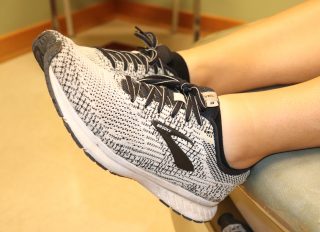
NEUROMAS
An irritation of a nerve may produce a neuroma, which is a benign enlargement of a nerve segment, commonly found between the third and fourth toes. Several factors may contribute to the formation of a neuroma, inclulding trauma, arthritis, high-heeled shoes, or an abnormal bone structure. Symptoms such as burning or tingling to adjacent toes and even numbness are commonly seen with this condition.

TENDONITIS
Tendonitis is an inflammation of the tendon (the end of the muscle that attaches to the bone). It can be painful and is treated with rest and ice packs. Occasionally, cortical steroid injections may be a necessary treatment.

WARTS
Warts are one of several soft tissue conditions of the foot that can be quite painful. They are caused by a virus, which generally invades the skin through small or invisible cuts and abrasions. They are often mistaken for corns or calluses—which are layers of dead skin that build up to protect an area which is being continuously irritated. The wart, however, is a viral infection.

PROFESSIONAL DIAGNOSTIC SERVICES
No matter the problem – common or a little unusual – Dr. McCalla and Dr. Brodine will work to diagnose and treat each patient with on-site diagnostic equipment and years of professional podiatry expertise.
